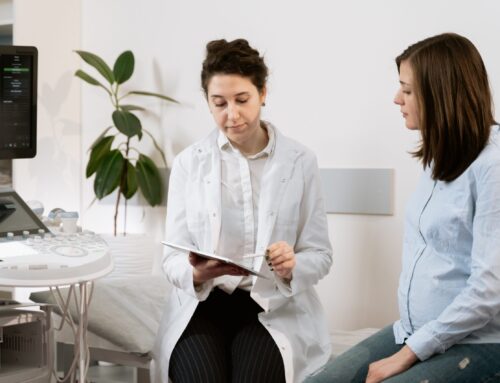Another Way to Measure Employee Productivity Could Benefit Employers

Nicole Nicksic, PhD, MPH
Research Lead
IBI is based on the premise that “productive, healthy employees promote healthy business”. If that looks familiar, it should be—it is the slogan on our website homepage. We recognize that high productivity is critical to business success, and good health maintains this productivity. When an employee’s health deteriorates, their work productivity also plummets.
How can productivity be measured?
One way to look at this relationship is using patient-reported outcomes on productivity (PRO-P) to look at the effects of health problems on employees. Employees are directly asked about their absences, difficulties in giving their full effort while on the job (presenteeism), and other limitations at work that results from illness or side effects of treatment. Given the billions of dollars in productivity lost to illness every year, quite a few survey instruments measure productivity losses and costs due to illness.
However, researchers have different priorities than employers when measuring productivity
Our newest report reviews how clinical researchers use PRO-P in cancer studies. It was not clear how these study instruments that capture the impact of illness on productivity are used in clinical studies designed for showing the value of effective treatments. We combed through hundreds of cancer studies to find out.
We chose cancer because, while it can incur high healthcare costs, improvements in treatments allow many survivors to return to work much sooner now than in decades past. Findings from this review highlight that clinical research seldom uses PRO-P instruments designed to communicate the productivity impact into costs for employers. Researchers more commonly used surveys they created themselves and included research questions that may bypass the interests of employers. IBI’s findings from our review were then shared with an employer advisory board we recruited for this project. We wanted to hear directly from health and benefits specialists about how they use PRO-P for their benefit decisions.
Specialists revealed that they rarely use or even see information on employee productivity. Not surprisingly, employers largely use disability claims and payroll data on sick leave to shape their benefits plans, and therefore did not currently see a strong need for using PRO-P.
But PRO-P can be useful for employers!
Sure, specialists noted that PRO-P is often used in tandem with medical records by doctors and absence experts to transition employees on leave back to their jobs smoothly. And certainly, PRO-P could be helpful in informing benefits decisions, especially in having individual data on whether employer-sponsored wellness programs improve employees’ productivity to produce a return on investment.
The Bottom Line
Collecting PRO-P could help employers make better decisions about health benefits, but not in the way that clinical research currently presents it.
This study has differed a bit from previous IBI research in that the audience are those who wish to communicate with employers about the productivity value of high-quality care. Clinical researchers have shown interest in studying PRO-P yet are unsure if this information will even show up on employers’ radar. One suggestion we offer is to add the cost of absences and presenteeism to clinical research. While adding productivity measures to research may take time, we are hopeful that this would be meaningful to employers and help improve employee benefits in the long run.








